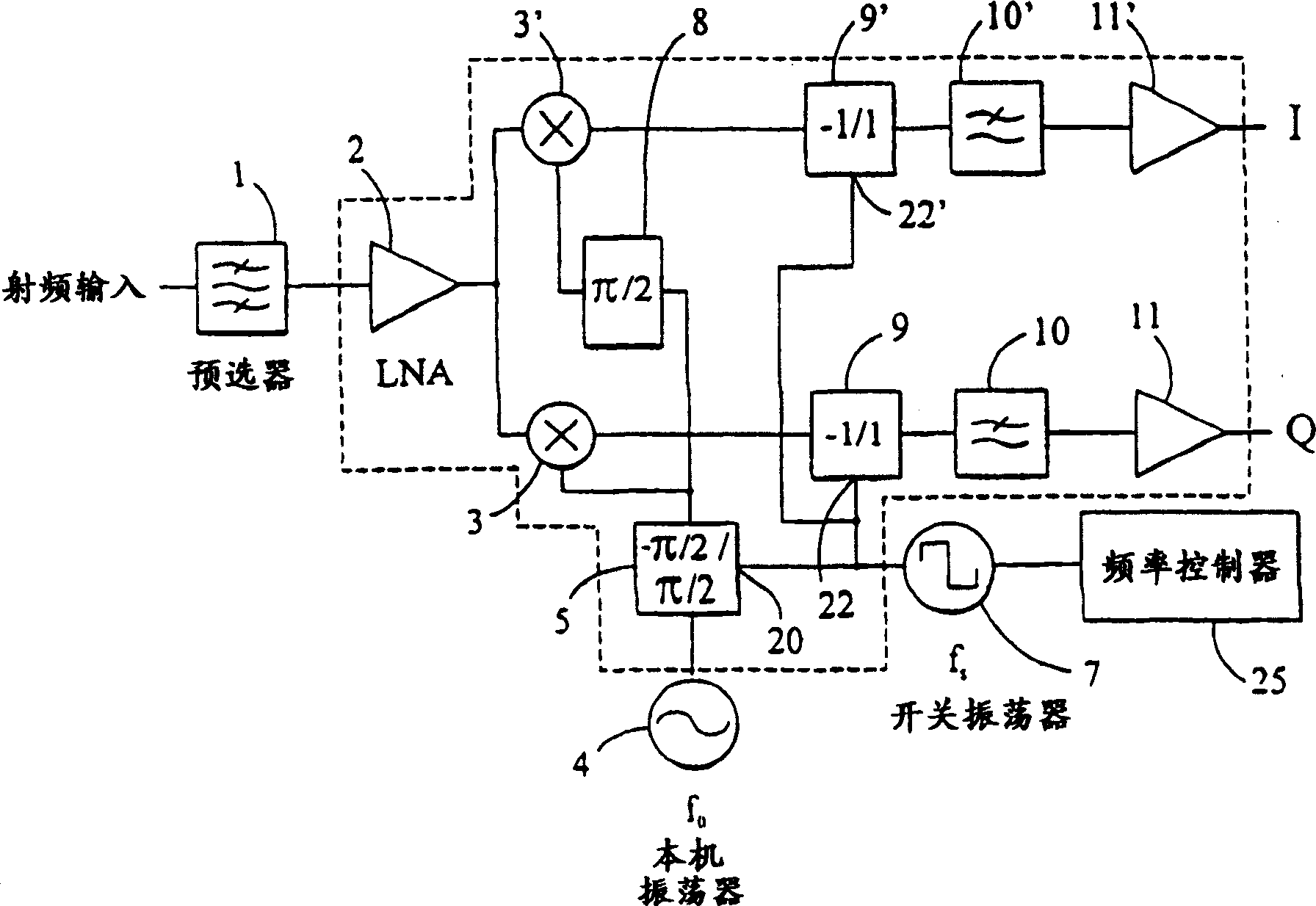Direct conversion receiver
A technology of receiving signals and local oscillators, which is applied in the directions of multi-frequency modulation conversion, amplitude modulation oscillation demodulation, multi-carrier systems, etc., and can solve problems such as leakage and secondary distortion of mixers
- Summary
- Abstract
- Description
- Claims
- Application Information
AI Technical Summary
Problems solved by technology
Method used
Image
Examples
Embodiment Construction
[0017] figure 2 A block diagram showing a preferred embodiment of the invention. A radio frequency signal is received at the RF input and sent to a preselection filter 1 and then to a low noise (LN) amplifier 2 . The input signal is then decomposed and fed to an up-mixer 3 ′ and a down-mixer 3 . The local oscillator 4 generates a sine wave tuned at the same frequency as the carrier of the incoming RF signal. The sine wave generated by the local oscillator 4 is fed to an input of the switchable phase change element 5, and the phase of the input sine wave is changed by -π / 2 or π / 2 radians (-90° or 90°) according to the state of the control input 20 ). Although the phase transitions do not have to be -π / 2 and π / 2, the difference between the first phase change and the second phase change must be equal to π radians (or 180°).
[0018] The switching oscillator 7 generates a switching signal having two states (eg a square wave pulse train) corresponding to an "on" state and an "o...
PUM
 Login to View More
Login to View More Abstract
Description
Claims
Application Information
 Login to View More
Login to View More - R&D
- Intellectual Property
- Life Sciences
- Materials
- Tech Scout
- Unparalleled Data Quality
- Higher Quality Content
- 60% Fewer Hallucinations
Browse by: Latest US Patents, China's latest patents, Technical Efficacy Thesaurus, Application Domain, Technology Topic, Popular Technical Reports.
© 2025 PatSnap. All rights reserved.Legal|Privacy policy|Modern Slavery Act Transparency Statement|Sitemap|About US| Contact US: help@patsnap.com



